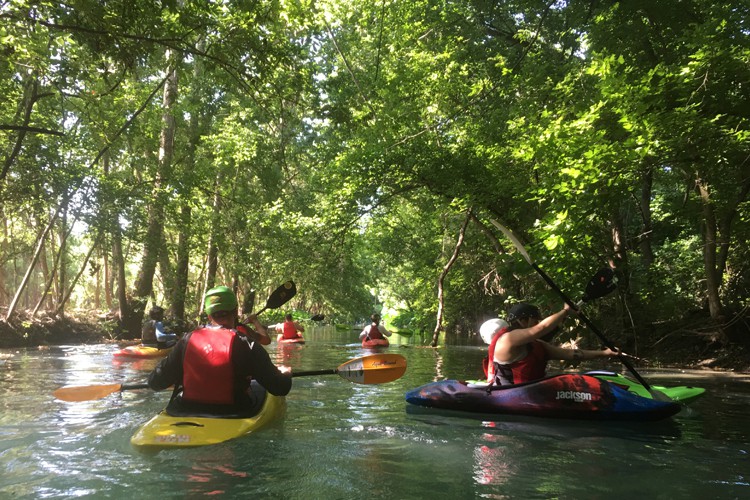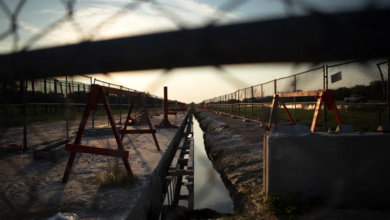
LETTER: Wake Up San Marcos Residents Before It’s Too Late!
OPEN LETTER TO THE RESIDENTS OF SAN MARCOS
Next year will mark Capes Dams’ 150th Birthday, built 1867. It was determined “eligible” for the National Register of Historic Places for its significance to commerce and engineering by the National Park Service in 1985.
Cape’s Dam is the home to the first industrial activity in Hays County, which means it is also a large part of San Marcos’ history and could be lost forever if we sit by and do nothing.
On March 15, 2016, the San Marcos City Council voted to demolish Capes Dam without the knowledge of its National Register eligibility or even official bids on the cost to fix the dam, despite funds having been allocated to repair the dam and improve the park. (See allocated funding on the COSM purposed FY 2016 – 2017 Budget -Most Updated Copy Available)
The Watershed Systems Group Inc. was the only report the San Marcos City Council used to base its decision on the fate of the Cape’s Dam and was decided despite council members admitting there were SUBSTANTIALLY more requests from citizens to preserve the dam.
The report used these three criteria ONLY:
- the proposed improved habitat for the fountain darter;
- proposed improved habitat for Texas Wild Rice, and
- maintaining recreational access to the San Marcos River
Timeline of events for Cape’s Dam Removal
2012
US Fish & Wildlife pays the River Systems Institute $25,000 for study on “Capes and Cummings Dam Removal Evaluation.” This study stated that maintaining dam at full height is better for the Fountain Darter (a federally protracted endangered species) habitat than removal of the dam.
March 2014
Initial meeting between City of San Marcos, Melani Howard with Habitat Conservation Plan (HCP), US Fish and Wildlife (USF&W), representative Mike Montagne (dam removal department), and Dr. Hardy, owner of Watershed Systems Group. (Interesting meeting 5 months before Park Board gets a meeting, and just months after City acquires the dam.)
Aug. 26, 2014
Mike Montagne and Kristy Kollaus (works with Dr. Hardy) first presentation to the San Marcos Parks & Recreation Board about removal of Cape’s Dam.
2015
Dr. Hardy and the Watershed Systems Group is paid $10,000 by the City of San Marcos to evaluate the removal of Cape’s Dam and how it would affect the habitat.
April 16, 2015 Paul Murray motions to remove Capes Dam from Dr. Hardy’s report and presentation. However the report has a June 2015 date???????
June 2015
Cape’s Dam Report was presented to the Parks and Recreation Board stating there would be a .04% improved habitat for the Fountain Darter with removal of the dam.
October 2015
The 2nd Cape’s Dam Report was presented to San Marcos City Council stating there would a 5% improvement in Fountain Darter Habitat with the removal of the dam.
Other issues with the Cape’s Dam Removal Report included the follow:
- Only an average 20 year flow of 175 cubic feet per second (CFS) and below (100 & 45 CFS) are used to determine the suitability of habitat for Texas Wild Rice and the Fountain Darter. The current average cubic feet per second for the past 15 months is 300 cubic feet per second.
The difference in volume of water from 175 cubic feet per second to 300 cubic feet per second is over 80,000,000 gallons a day!
- The only time an above average flow rate of 300 is used, is for ¹sediment removal. How can you have two completely different flow rates in the same river at the same time? Why not report a high, median, and low cubic feet per second for both sediment removal and habitat suitability?
- There was NOT a full or complete study of the ¼ mile stretch of river that is called the Left Channel (Mill Race) that is classified “Federal Protected Critical Habitat” for the Fountain Darter and continues to have flowing water provided by Capes Dam. If the dam is repaired, with more water diverted in the Left Channel, this could provide an even better habitat for the endangered Fountain Darter.
Mentioning the loss of Fountain Darter was pulled from the Oct. report but very clearly in the June report!
- Inconsistencies regarding the inclusion of vegetation at the beginning of the report but pulled out of the results on pg 24 of Oct. report which stated habitat suitability was based only on depth and velocity.
- Report concludes how removal of a dam and mill race (two very slow flow environments) will increase Fountain Dater’s habitat in light of the EAA velocity suitability curves. ( See Fig 29, P. 42 in 2009 at https://smcorridornews.com/wp-content/uploads/2016/09/2009_Hardy_-FlowRegimeEvaluation.pdf.)
- Omission of Vegetation cover OR type of vegetation in the modeling estimates is particularly problematic given the extensive data from BIOWEST showing BOTH features play a critical role in Fountain Darter habitat.
The National Academy of science recently did a report for the Edwards Aquifer Authority that mention issues with Habitat Suitability Modeling, used in the analysis of Cape’s Dams removal.
The National Academy stated that the model for Wild Rice should be used as a “Hypothesis” and needed to be “tested for robustness”. The Fountain Darter modeling could act as a “back-up” to the individual-based modeling but will require extensive data for model formulation, calibration, and validation prior to real world application.
The fate of the Cape’s Dam was determined using one report that National Academy of Science states very clearly should NOT be used as a primary decision making tool especially on something as irreversible as the dam removal.
Please keep up to date on information that will be on our Facebook page at https://www.facebook.com/SaveOurSMTXRiver/
Reports will be uploaded soon to our website for you all to verify to what is going on at savetheSMTXriver.org. We will try and update as often as I can in the paper. Please like our page and share our post to help inform our community the TRUTH of what is going on.
There is way more to the story of why a select few like to see this dam gone….. If you like to help please reach out to me on how you can help.
Brian Olson, San Marcos TX.
¹ Sediment is a naturally occurring material that is broken down by processes of weathering and erosion, and is subsequently transported by the action of wind, water, or ice, and/or by the force of gravity acting on the particles. For example, sand and silt can be carried in suspension in river water and on reaching the sea be deposited by sedimentation and if buried this may eventually become sandstone and siltstone, (sedimentary rocks).
Sediments are most often transported by water (fluvial processes), but also wind (aeolian processes) and glaciers. Beach sands and river channel deposits are examples of fluvial transport and deposition, though sediment also often settles out of slow-moving or standing water in lakes and oceans. Desert sand dunes and loess are examples of aeolian transport and deposition. Glacial moraine deposits and till are ice-transported sediments. Source: https://en.wikipedia.org/wiki/Sediment.







Scientific diver here. I looked into these claims to save the dam. This is horribly inaccurate. I’ve found zero fountain darters, zero wild rice on the mill run. There are still very deep pools and plenty of right angle banks that will break up the water speed. Remove the dam, improve the river. Put a mask on and see for yourself.